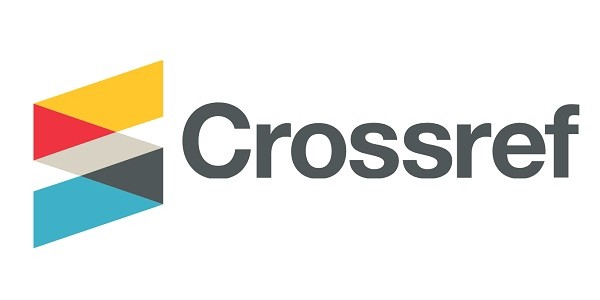Industrial Waste As Filler And Pamekasan Aggregate In The Mixture Asphalt Concrete - Wearing Course In Terms Of Marshall Characteristics
DOI:
https://doi.org/10.37253/jcep.v4i2.8664Keywords:
Batumarmar Fly Ash Pamekasan Marshall.Abstract
Utilization of hot mix asphalt in Pamekasan has increased due to the expansion of road networks for construction and maintenance purposes. The commonly used hot asphalt is AC-WC (Asphalt Concrete - Wearing Course), which serves as the hot asphalt layer for the pavement construction. Historically, the production of hot asphalt mix in Pamekasan involved obtaining materials from outside the Madura region, leading to high production costs. In response to this issue, there is a need for innovation in the composition of hot asphalt mix materials to enhance cost efficiency, especially considering the abundant quantity of materials available in Pamekasan. An innovative approach includes using crushed stone from Pamekasan as an aggregate in hot asphalt mix and incorporating waste materials such as Batumarmar limestone powder and fly ash as fillers. The utilization of local materials from Pamekasan and waste is expected to reduce production costs. For this purpose, 45 samples were created with different percentages, and the Marshall test method was employed to determine values such as density, flow, VMA (voids in mineral aggregate), VIM (voids in mineral aggregate filled with asphalt), VFA (voids filled with asphalt), and stability. Based on the test results, the Optimum Asphalt Content (OAC) was found in a mixture with 4% filler variation and 6% asphalt, yielding a density of 2.287, stability of 917 kg, flow of 3.467 mm, Marshall Quotient of 250.09 kg/mm, VIM of 3.67%, VMA of 15.18%, and VFB (voids filled with bitumen) of 77.68%. Another optimum mixture was identified with a 6.1% asphalt and 10% filler variation, resulting in a density of 2.280, stability of 1,127 kg, flow of 4.50 mm, Marshall Quotient of 250.45 kg/mm, VIM of 3.66%, VMA of 15.16%, and VFB of 76.70%. Additionally, a 6.2% asphalt and 10% filler variation produced a density of 2.285, stability of 1,061 kg, flow of 4.00 mm, Marshall Quotient of 365.28 kg/mm, VIM of 3.31%, VMA of 15.64%, and VFB of 78.84%.
Downloads
References
[2] Raffles and U.H. Umar, " Stability Analysis of Laston AC-WC Using K-250 Quality Waste Concrete as Coarse Aggregate," Journal of Civil Engineering and Planning (JCEP) [Online], Volume 4 Number 1, 30 June 2023.
[3] E. Rabihati, Rasiwan and R. Riyanti, “Karakteristik Laston AC-WC Menggunakan Variasi Kadar Filler Limbah Balon Gas,†Vokasi: Jurnal Publikasi Ilmiah, 2018.
[4] M.D.I. Budianto and Lubis Z,“Alternatif Penggunaan Agregat Halus Batu Kapur Mantup Dalam Campuran Aspal Panas AC-WC,†U Karst, 2020.
[5] A. Setiawan, M. Saifuddin, and R. A. Maulana, “Pemanfaatan Limbah Pecahan Keramik Dan Kapur Sebagai Bahan Pengganti Sebagian Semen Pada Produksi Paving Blok Ditinjau Dari Nilai Kuat Tekan Dan Penyerapan Airâ€, Ge-STRAM J. Perenc. dan Rekayasa Sipil., vol. 6, no. 1, pp. 54-59, Mar. 2023
[6] A.U.A Qurny, I.H.Puspito and N.Tinumbia,“Pengaruh Penambahan Bahan Pengisi (Filler) Fly Ash Terhadap Campuran Aspal Beton Lapis Aus (Asphalt Concrete Wearing Course/AC-WC),†Jurnal Artesis, 2020.
[7] M.Setiawati , “Fly Ash Sebagai Bahan Pengganti Semen Pada Beton,†In Seminar NasioanalSains dan Teknologi Fakultas Teknik Universitas Muhammadiyah Jakarta 2018, 2018, pp. 1–8.
[8] M. Yusar and Indrastuti,“Effect of Use Fly Ash on Soil Stability in Batam Meisterstadt Project,†Journal of Civil Engineering and Planning (JCEP), [S.l.], v. 3, n. 2, p. 161-168, dec. 2022.
[9] T. J. Irwanto, A. Setiawan, and M. H. Mukti, “The Utilisation of Waste Bamboo Shells as A Filler in The ACWC Mixture on Marshall Characteristicsâ€, IJMABER, vol. 3, no. 4, pp. 693-702, Apr. 2022.
[10] D. Asmaroni, M. Saifuddin, and A. Setiawan, “Perbadingan Penggunaan Abu Batu Madura Dan Abu Batu Jawa Pada Campuran Mortarâ€, Ge-STRAM J. Perenc. dan Rekayasa Sipil., vol. 5, no. 1, pp. 1-5, Jun. 2022.
[11] D.J.B. Marga, Spesifikasi Umum 2018 Untuk Pekerjaan Konstruksi Jalan dan Jembatan.Jakarta : Kementerian Pekerjaan Umum dan Perumahan Rakyat, 2020.



_0011.jpg)









